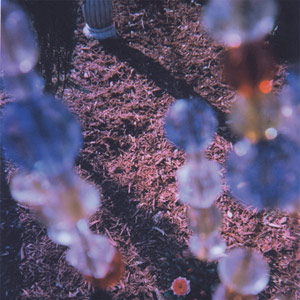
The Path of Spectrolite
Amethyst Sunset
For what it’s worth, it’s no secret that this column has always regarded Cleveland’s Emeralds as the gold standard when it comes to defining a new age of psychedelia. And since the release of their watershed album, last year’s Does It Look Like I’m Here?, any of the collective’s myriad side projects and solo outings have been met with equal amounts of anticipation and scrutiny. Luckily, most of that output has evolved just as much as the Emeralds have as a whole from record to record. That evolution can be heard in the work of Mark McGuire, and now, in the new album from Imaginary Softwoods, the solo excursion of John Elliott, the Emeralds’ synth-specialist. It’s a shame, though, that the internet has ruined any kind of anonymity among this new era. As Blue O’Randa, recording on the North Coast (that would be Lake Erie), Elliott attempts to distance himself somewhat from an ego, from a persona, or from anyone knowing who he is exactly or how his pseudo-Nova soundtracks are created. All the listener is made aware of is that The Path of Spectrolite is composed of synthesizer and voice. Whether or not the listener wants to play along and indulge in Elliott’s highly contemplative, and sometimes transcendent, soundscapes is a matter of plugging in and finding a moment where one can truly devote themselves to these sonic quests.
New Age, for better or worse, is usually associated with negative connotations—and usually without measuring the net of what falls under that umbrella. On the surface, The Path of Spectrolite may come across as aimless, infinite drone, a stoner just twiddling knobs till he dozes off. There was a similar response when Emeralds first started releasing tapes to a small few and when eventually people outside of Ohio started to take notice. But just as Emeralds have taken to layering incredibly dense, intricate progressions atop their plane of noise, as Imaginary Softwoods, Elliott is injecting his music with a deeper mysticism and dexterity in composition that comes with rising to a new level of synth divinity. If anything, Elliott magnifies the best qualities of New Age on The Path of Spectrolite by feigning celestial weightlessness or heightening the synesthesiastic effect when he attempts to turn sound into perceivable colors. Conceptually, the album will need mineralogy textbooks and chakra training to fully interpret (ya might want to research feldspar fossilized lava and crystal cleavage). But that is what makes The Path of Spectrolite so engaging: the more you are involved with Elliott’s universe the more you will take from it. It does, as the title suggests, follow a path. Though it’s impossible to sit here and try to explain how each track differs from the next, there is ascension. Oscillations rise in pitch and velocity. When the listener encounters “Eye Color (Forest of Light),” the sky opens up and darkness is lifted from the album’s temperament. On “Rainbow Obsidian Key,” there appears a complex kaleidoscope of synth melodies ducking in and out of the drone. And on the monolithic second half, those ominous drones get louder and more direct the closer one comes to the 14-minute finale, “Crystal Pond.” I suppose that’s the final destination. It’s almost scary to think where Elliott and his crew (or perhaps just he himself) can expand the world of psychedelia after listening to something as immaterial (at least compared to his regular outfit’s output) as Imaginary Softwoods. The Path of Spectrolite is a rewarding metaphysical trip which garners inspiration from a very real and hyper-natural place.
Kevin J. Elliott
PRIMITIVE FUTURES
An Interview with Purling Hiss
Hozac Summer 7-inches
The Men, Leave Home
Obnox, I'm Bleeding Now
June Singles Round-Up, Part 2
June Singles Round-Up, Part 1
A Missive from Evil Weevil
Wet Hair, In Vogue Spirit
Three New Singles from Florida's Dying
Skeletons, People
An Interview with the Feeling of Love
Tic Tac Totally Singles Round-Up
Silver Shampoo, Higher and Higher
The Alps, Easy Action
